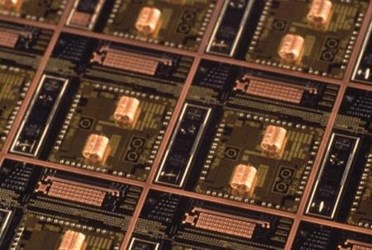"Hair-Like" Brain Implant Could Simulate Vision In The Blind

Harvard scientists are testing a neural prosthesis that uses arrays of microscopic coils to generate magnetic fields that can target specific regions of the brain, such as the visual cortex to simulate sight. After a proof-of-concept study in mice, the researchers intend to evaluate the technology in primates and rats, and say the implant potentially could be used for nerve stimulation in other areas of the body.
Neural prosthetic devices have to overcome many persistent challenges, including mechanical failures inherent in electrode’s interaction with brain tissue. Technology strong enough to stimulate neural activity is more likely to be too large and cumbersome to be feasibly implanted in the brain long-term. Recent research has sought to overcome these difficulties using electrodes embedded in injectable mesh, advanced nano-manufacturing strategies, or bioresorbable technology that dissolves over time.
Researchers at the PARC, a research and development company formerly known as Xerox PARC, have developed a “hair-like” implant that rests on the surface of the brain and stimulates neural activity with magnetic fields generated by microscopic coils. In a study published in Science Advances last year, Harvard researchers demonstrated proof of concept, using the prosthesis in mice to stimulate whisker movement.
Study authors wrote that magnetic fields show excellent ability to permeate biological substances and would not be impeded by scar tissue — an obstacle affecting many electrode-based neural implants.
“These findings suggest that coil-based implant might be a useful alternative to existing electrode-based devices,” wrote the study authors. “The enhanced selectivity of microcoil-based magnetic stimulation will be especially useful for visual prostheses as well as for many brain-computer interface applications that require precise activation of the cortex.”
Moving forward, the researchers intend to test this theory by implanting the technology in monkeys and stimulating the visual cortex to prompt a behavioral response.
“At the end of that we hope to have monkeys be able to navigate a maze, just by perceiving light and dark or basic geometric patterns,” said Bernard Casse, researcher at the PARC, to MIT Technology Review.
Researchers from the University of Florida will conduct a separate study to test the implant’s long-term stability when implanted in rats. Todd Coleman, associate professor at the University of California who is not connected to the study, told MIT Technology Review that the research is promising, though a human application is still a long way away.
“There could be very nice applications in other parts of the body,” says Coleman, speculating that the device could stimulate neurons in the stomach to treat digestive problems or the vagus nerve to address symptoms of post-traumatic stress disorder.
The three-year project currently receives funding from the BRAIN Initiative, launched by President Obama in 2013 as a collaboration of both public and private researchers aimed at developing our understanding of brain mechanisms and fostering development of innovative technologies to treat neural disease. Other funded projects include wearable devices for Parkinson’s research, optogenetic research at Stanford, and “electroceuticals” that target nerve stimulation.
